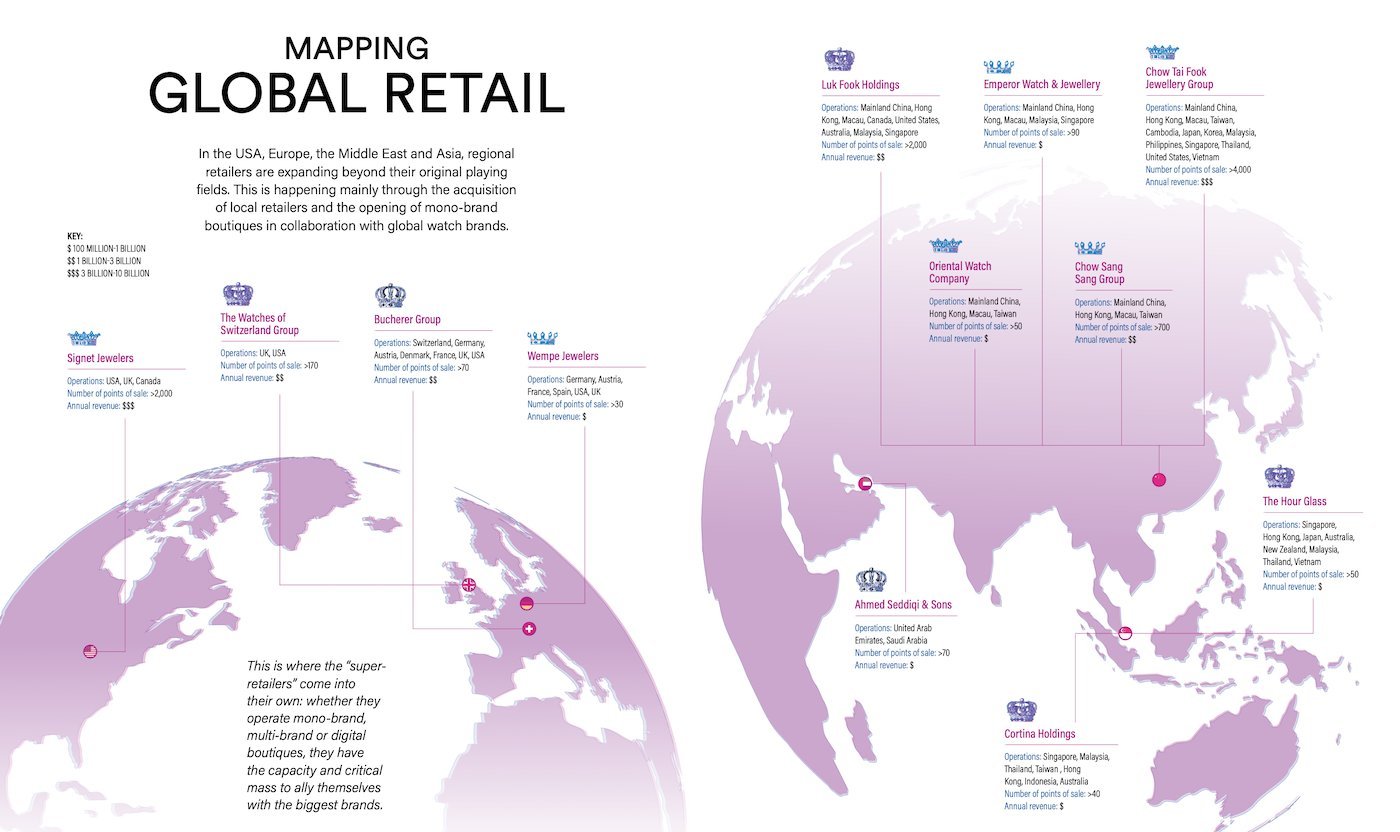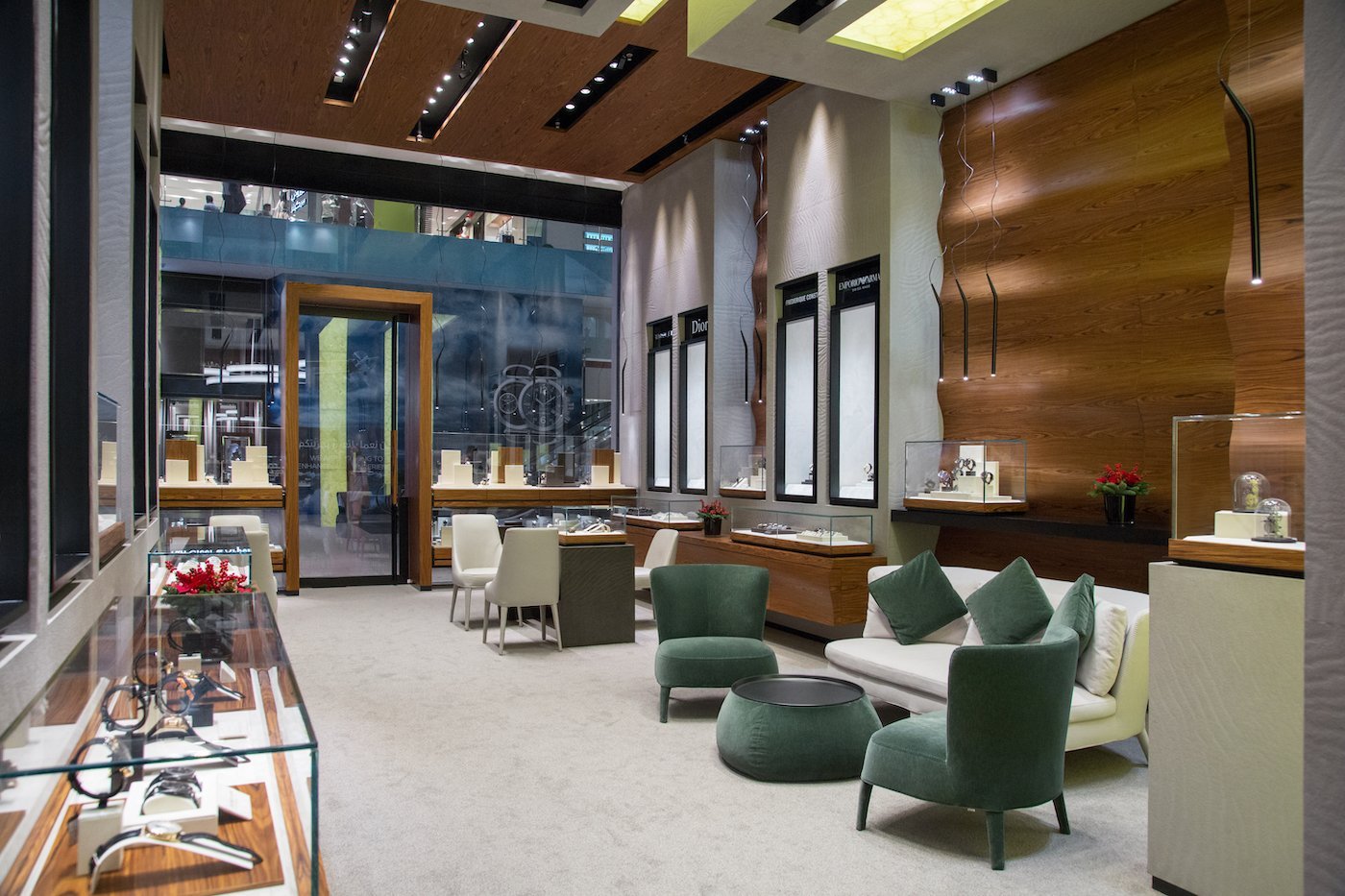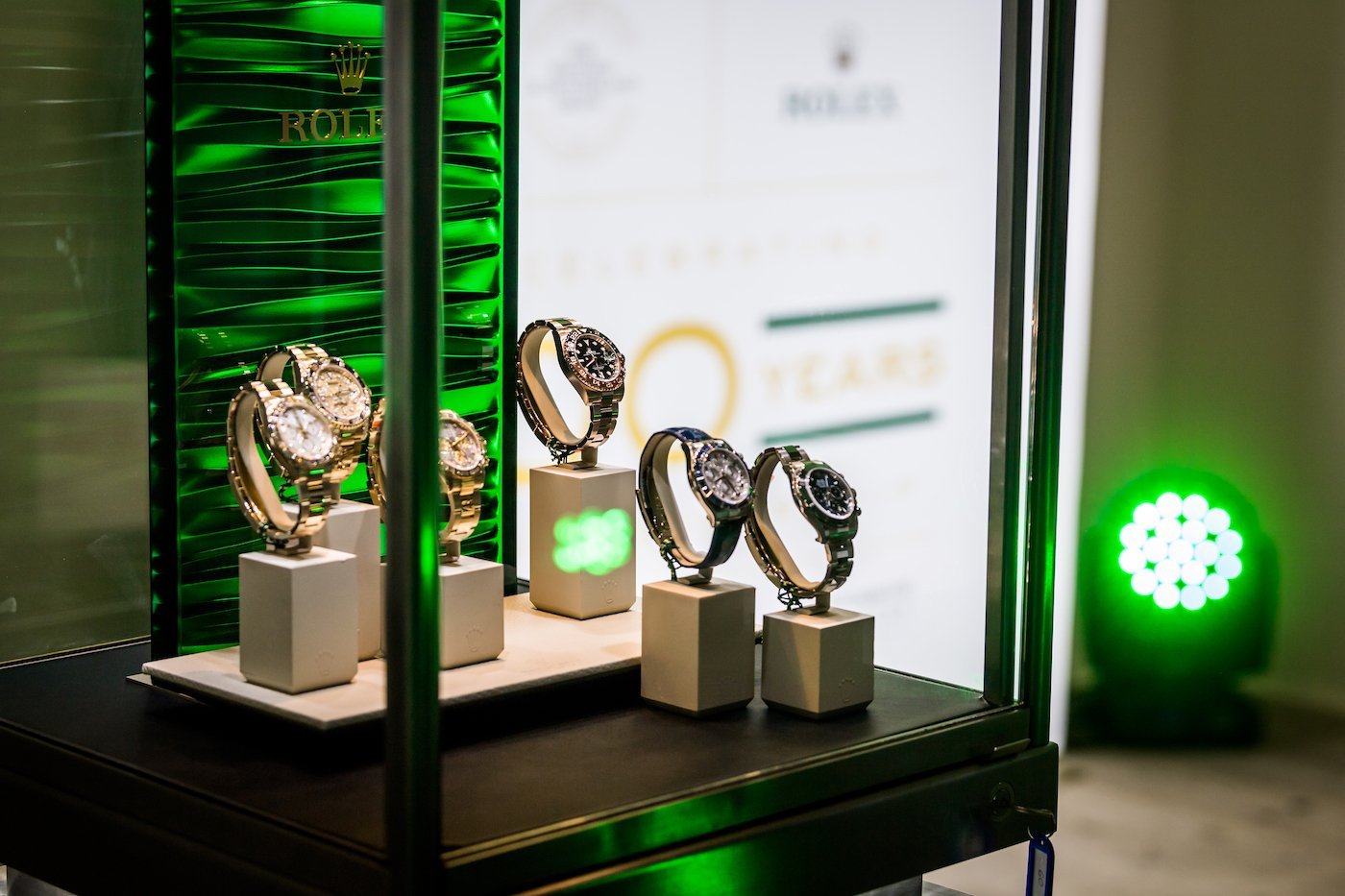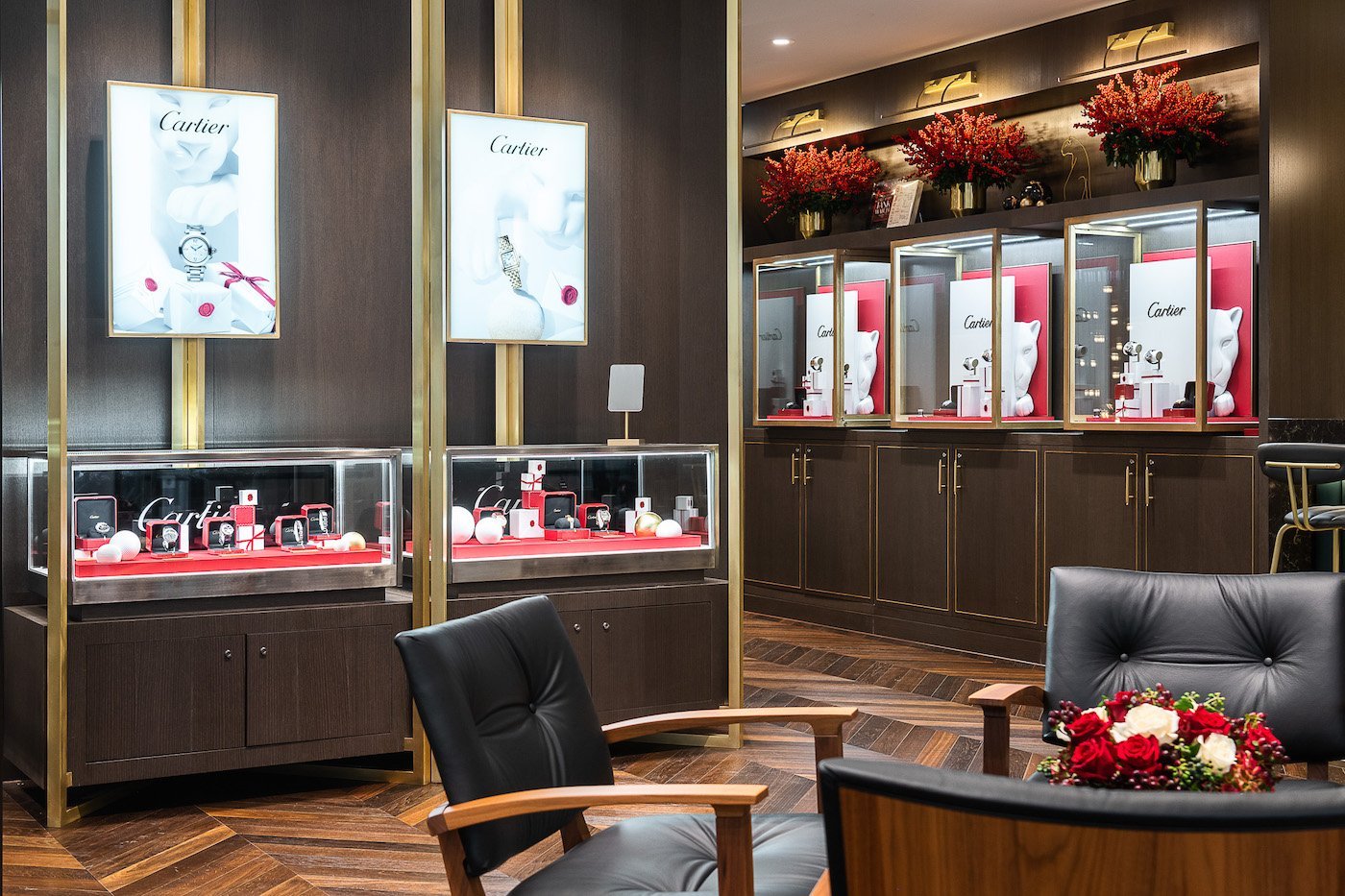fter the single-minded race to conquer China that dominated the horological agenda of the last decade, a new competition has taken its place. A growing number of national and regional retailers, both physical and digital, are seeking to expand beyond their home markets, through new openings and takeovers. By doing so, they are becoming “super-retailers” with multiple anchor points.
Recent examples include British retailer Watches of Switzerland’s breakthrough in the US market, the establishment of WatchBox in the Middle East in partnership with Ahmed Seddiqi & Sons, the takeover of Sincere by Cortina in Singapore or the expansion of the Chow Tai Fook network in mainland China. “The United States and Europe remain huge underexploited markets with a lot of promise,” says Brian Duffy, boss of the British group.
But this race is actually several races, being run in parallel:
• The race for market share as traditional retailers react to increasing pressure from secondary market players and auction houses – particularly for watches that are hard to find on the primary market.
• The race for inventory, as certain models from the major houses (Rolex, Patek Philippe, Audemars Piguet, Richard Mille) and independent craftsmen (F.P.Journe, Philippe Dufour, Voutilainen, MB&F, H. Moser & Cie, De Bethune, Akrivia) reach staggering prices.
• The race for local customers, as the interruption of shopping tourism restores the importance of a local customer base, particularly in the United States and Europe.
• The race for content and interaction with a new generation of dynamic collectors who appeared during the pandemic; this audience not only has a strong interest in the most popular models, they also have a big appetite for horological culture in the broader sense.
• The race for online visibility, as the distinction between second-hand and new watches increasingly gives way to the notion of “collectibles” on a global hunting ground.
• The race for partnerships with the biggest brands, with a view to opening mono-brand boutiques or managing their secondary market.
Rather than a “fight to the death” between brands and major retailers, the trend seems to be towards a deepening of partnerships between them, and the creation of intercontinental super-retailers.

Cooperation after confrontation?
Pre-pandemic, it looked like watch brands and groups would double down on the idea of becoming their own retailers, at the expense of the traditional players. The difficulties in certain specific markets such as Hong Kong, followed by the outbreak of the pandemic, highlighted the challenges connected with going it alone (despite the fact that Richemont remains the world’s largest watch retailer).
Rather than a “fight to the death” between brands and major retailers, the trend seems to be towards a deepening of partnerships between them, and the creation of intercontinental super-retailers. This is reflected in increasing numbers of mono-brand franchise stores and numerous takeovers of smaller retailers by these new giants. This model of cooperation is also a legacy of the pandemic, which acted as a brutal “crash test” of the strengths and weaknesses of each player.
Gone are the days when watch stores could line the streets of a city like Hong Kong, offering the same products from the same brands. Everything today is about added value and exclusivity.

Stock market success
Consultant Thierry Huron of the Mercury Project notes that in 2021 the stock market performance of most of these super-retailers exceeded that of the watch groups and brands themselves (see chart below).
He believes successful retailers have found a way forward by capitalising on the success of their digital transformation, and by representing smaller independent watch brands alongside the market leaders. They also benefit from strong liquidity that allows them to invest heavily, especially online.
The consultant details: “This is one of the reasons why many retailers have strongly outperformed the value gain of the largest listed watch and jewellery brands, such as Swatch Group and Fossil Group, which were up by only 15.5% and 19.2% respectively. Even the Richemont Group, with its spectacular gain of 71%, was overtaken by Emperor Watch & Jewellery, Oriental Watch, Cortina, The Hour Glass and Watches of Switzerland. Although most of these retailers distribute Richemont brands, they outperformed the group.”
Signet Jewelers regained its 2015 record with a 216% rise in 2021, and Watches of Switzerland and The Hour Glass hit all-time highs. The share prices of most of the listed specialist watch and jewellery retailers recorded almost continuous gains throughout the year.
What has worked for one watch brand will not necessarily work for another – a common mistake in group strategies, where the push towards mono-brand boutiques might not be appropriate across the board.

A wealthier local customer base
Regardless of location, in Europe, the US and Asia, retailers have been buoyed by a dramatic economic recovery, boosted by unprecedented fiscal and monetary stimuli that have fuelled a surge in demand for luxury watches and jewellery. “From the US to Japan and Europe, savings by affluent Millennial and Gen Z consumers, thanks to reduced spending on travel, entertainment and services during the lockdowns, have helped drive this demand,” notes Thierry Huron. “More recently, in China, this trend also seems to be amplified by Chinese investors who now prefer luxury watches to real estate.”
In a market that remains fragmented between a multitude of local retailers, the consultant predicts that consolidation will continue. He also forecasts massive online investment, as several traditional players have used the period of the pandemic to catch up with online sales.
“More than ever, size matters in negotiations between retailers and brands in a market that is being totally reconfigured.”
Balance of power
“The recent takeovers do not surprise me at all,” confides Oliver R. Müller, head of the LuxeConsult consultancy firm. “More than ever, size matters in negotiations between retailers and brands in a market that is being totally reconfigured. Today, in this balance of power, very few brands could afford not to collaborate with retailers such as Watches of Switzerland or Bucherer.”
The expert sees the future of watch distribution as an “intelligent network” calibrated by each brand between e-commerce, mono-brand boutiques and multi-brand sales outlets. For him, one thing is certain: the number of multi-brand outlets will continue to decline. “We are going to see a dramatic reduction in the number of points of sale, with the creation of champions who will swallow up smaller players.”
Gone are the days when watch stores could line the streets of a city like Hong Kong, offering the same products from the same brands. Everything today is about added value and exclusivity. And for independent retailers, there are no more certainties: a historical partnership can be dissolved in seconds. That’s where a certain critical mass becomes vital – to be able to talk to brands on an equal footing.

Finding the magic formula
Every brand is looking for the right mix of distribution. And what has worked for one watch brand will not necessarily work for another – a common mistake in group strategies, where the push towards mono-brand boutiques might not be appropriate across the board. There are multiple visions, as illustrated by the most popular brands in the market. Rolex and Patek Philippe still rely on a network of external distributors, while Richard Mille and Audemars Piguet have opted for vertical distribution.
This is where the “super-retailers” come into their own: whether they operate mono-brand, multi-brand or digital boutiques, they have the capacity and critical mass to ally themselves with the biggest brands, while local players can no longer compete.
For retailers, there are no more certainties: a historical partnership can be dissolved in seconds. That’s where a certain critical mass becomes vital.
“This does not mean that a local retailer with one or two outlets will necessarily disappear,” emphasises Oliver R. Müller. “The most prestigious of them, such as Beyer Chronometrie in Zurich, are there to prove it. But the reality of the market is brutal: if you are no longer able to demonstrate your added value and the growth you can bring to partners, the biggest ones will leave. And you will eventually close down... or be bought out.”


























































